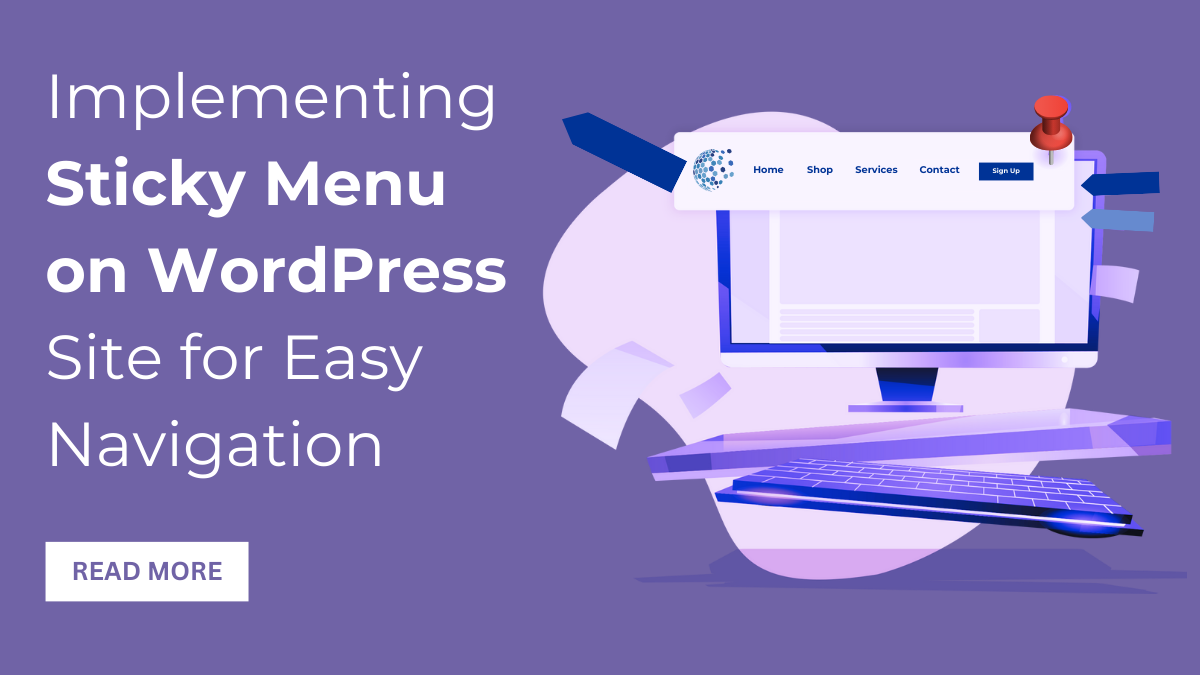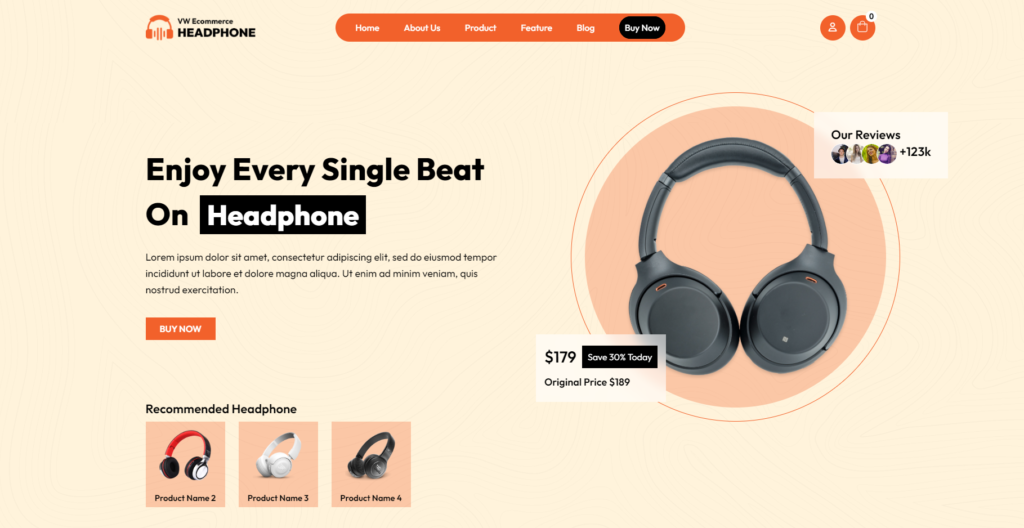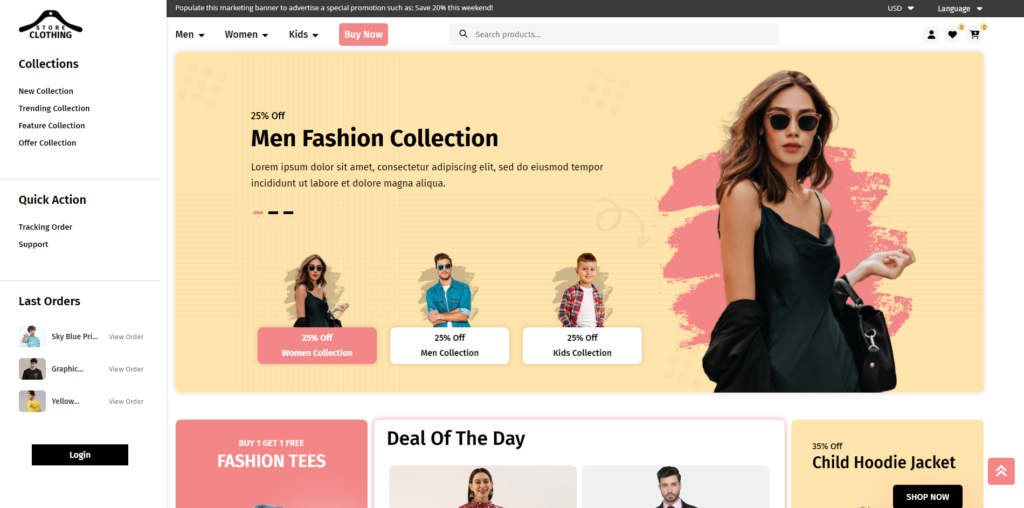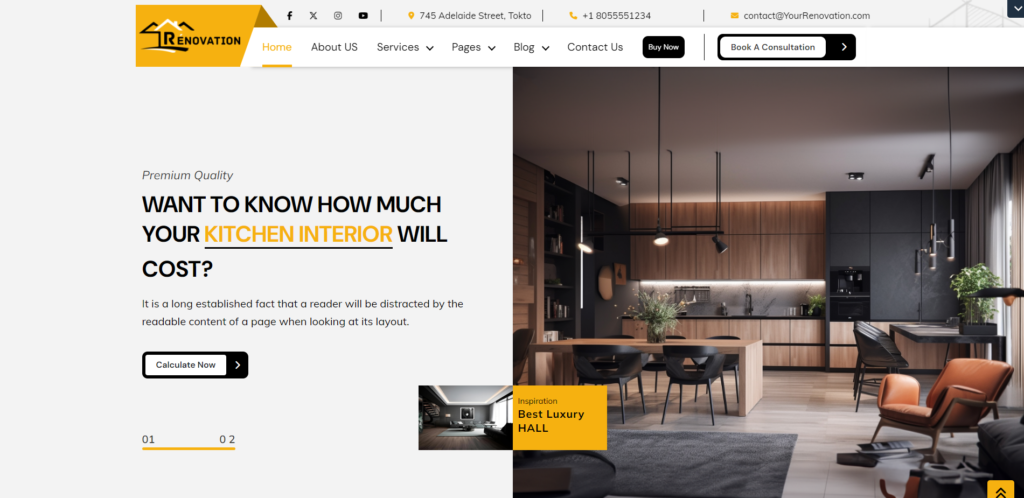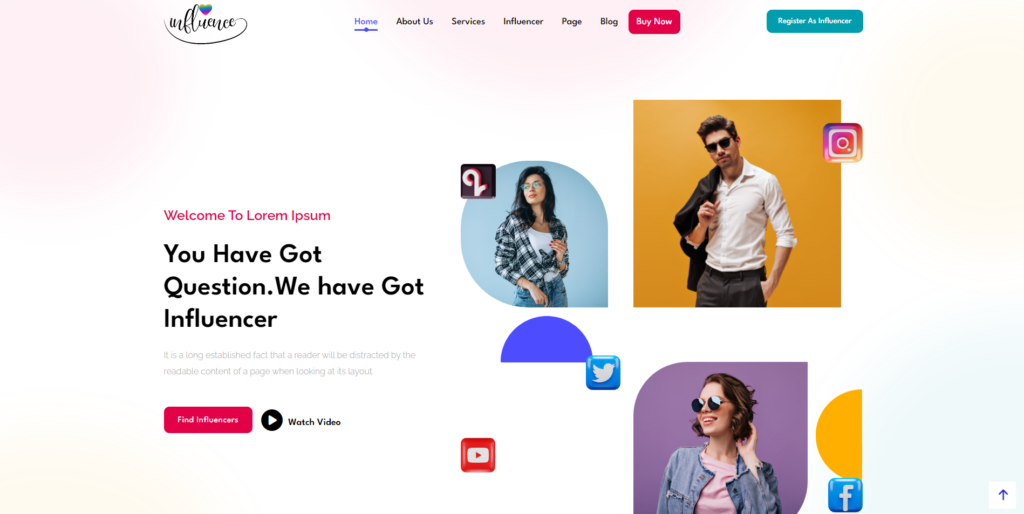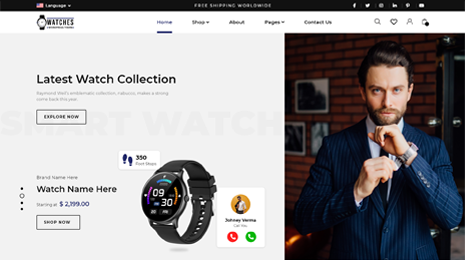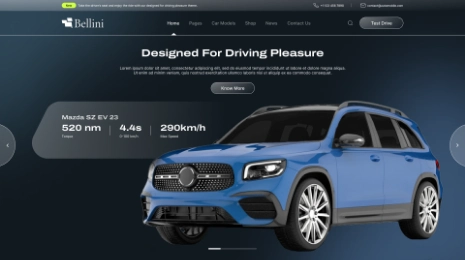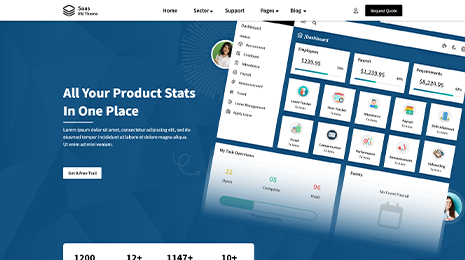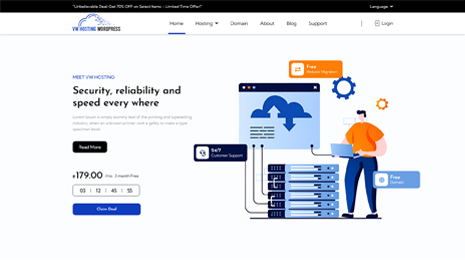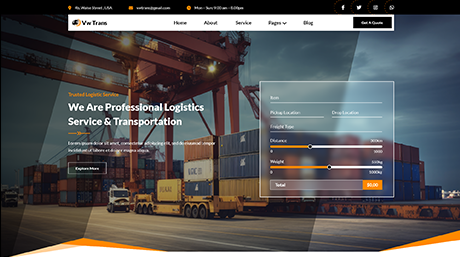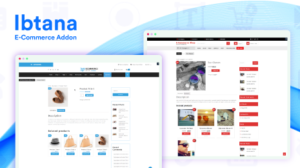Are you interested in adding a sticky menu to your WordPress website? This menu usually includes links to your website’s most important pages and remains visible on the screen even as the user scrolls down, ensuring easy access. Navigating a website seamlessly is crucial for user experience. One effective way to enhance this is by implementing a sticky menu.
This guide helps you know what are sticky menus, importance of a sticky menu and also the types. Also it directs on how to implement a sticky menu WordPress in website in a clear and easy-to-follow manner. Let’s delve into the steps involved in setting up this valuable feature to improve user engagement and satisfaction on your WordPress website.
What is a Sticky Menu?
Sticky navigation menus are fixed menus or floating menus that remain visible on the screen while scrolling down the page. They are generally located at the top of a website and contain links to the most important content. And this makes it easier for visitors to find the information they are looking for without having to scroll back up the page.
For eCommerce store websites, the top navigation menu usually includes links to pages that help increase sales, such as the checkout page and customer cart. By making the menu sticky, you can reduce the number of abandoned carts and increase sales.
Why to Add a Sticky Menu?
A sticky menu WordPress navigation is a helpful tool that enhances the user experience. It enables them to navigate through website content quickly and easily. The sticky navigation menu can be fixed to the top or bottom of the page, creating a persistent navigation bar or menu.
Using sticky navigation, visitors can access the content they need without having to scroll to the top. It improves the efficiency of website navigation, saving visitors time. Since the navigation bar is always visible, visitors can easily explore different content with sticky navigation. This results in an improved overall user experience and engagement.
In addition, a fixed navigation bar improves the overall appearance of the website. A sticky header always visible makes the website appear more organized and professional. Creating a better user experience and making the website more attractive to visitors.
Types of Sticky Menu
There are many different types of menus in WordPress. A sticky menu, also called a fixed or persistent menu, is a type of navigation menu that remains in place or “sticks” to the top or side of a webpage as users scroll down. sticky menu WordPress can come in various types based on their position and behavior. Some of the most typical kinds are listed below:
1. Top Sticky Menu
The Top Sticky Menu is positioned at the top of the webpage and remains fixed as users scroll down. This type of sticky menu ensures that essential navigation links. Such as the main menu or site logo, are always visible and easily accessible to visitors, regardless of their position on the page. It provides a convenient way for users to navigate through the website without having to scroll back to the top.
2. Bottom Sticky Menu
Contrary to the Top Sticky Menu, the Bottom Sticky Menu is anchored at the bottom of the webpage and stays in view as users scroll up or down. This type of sticky menu is useful for websites with lengthy content. It enables users to access navigation links, contact information, or other important elements without needing to scroll back to the top of the page.
3. Hidden Sticky Menu
The Hidden Sticky Menu is initially concealed from view but appears as users scroll down or perform a specific action, such as clicking on a designated button or icon. This type of sticky menu helps maintain a clean and uncluttered interface while still offering access to navigation options when needed. It provides a seamless user experience by minimizing distraction until navigation is required.
This is how hidden sticky menu shows up after the scroll.
4. Side Sticky Menu
The Side Sticky Menu is positioned along the side of the webpage, typically on either the left or right side, and remains fixed as users scroll vertically. This type of sticky menu is commonly used for navigation on websites with a minimalist design or limited horizontal space. It provides easy access to navigation links while maximizing the use of available screen real estate.
5. Multi-Level Sticky Menu
The Multi-Level Sticky Menu incorporates dropdown or flyout menus within the sticky navigation, allowing for hierarchical organization of navigation links. This type of sticky menu is suitable for websites with extensive content or multiple categories. It enables users to navigate through different levels of the site’s hierarchy without losing access to primary navigation options. It enhances usability by providing a structured and intuitive navigation experience.
How To Apply Sticky Menu on a WordPress Site Manually?
Below are the best-proven ways to add a sticky menu WordPress to a website for a better user experience. To create a sticky navbar using CSS, add position: fixed to your WordPress theme manually. Follow these steps:
- To access your WordPress dashboard, kindly log in.
- To customize the appearance, please navigate to “Appearance” and then select “Customize.”
- To access the Additional CSS option, please click on it.
- Please remember to include the following CSS code in your file:
Nav {
Background: #ffff;
Height: 70px;
z-index: 999;
margin: 0 auto;
boarder-bottom: 1px solid #dadada;
width: 100%;
position: fixed;
top: 0;
left: 0;
right: 0;
}- Substitute “nav” with your navigation menu’s ID or CSS class.
- To publish, please click on the blue button labeled “Publish.”
- To view the sticky menu on your website, please refresh the page.
How to Apply Sticky Menu on a WordPress Website with a Plugin?
Applying a sticky menu to your WordPress website using a plugin is a straightforward process that doesn’t require coding skills. If you want to create a sticky navbar on your website, you can use MyStickyBar. Follow these simple steps to implement a sticky menu using a plugin.
MyStickyBar
MyStickyBar formerly known as MyStickyMenu, a versatile plugin designed to enhance your website’s functionality and aesthetics effortlessly. With this powerful tool, you can create stunning notification bars that captivate your visitors’ attention. Whether it’s for announcements, promotions, or other important messages. But that’s not all – MyStickyBar also serves as a sticky menu plugin. Allowing you to keep your menu or header fixed at the top of the page after a specified number of pixels scrolled.
This ensures seamless navigation for your users, saving them valuable time and improving overall user experience. Lightweight and easy to use, MyStickyBar is the perfect solution for website owners looking to elevate their site’s functionality and aesthetics. Install MyStickyBar today and watch as your website’s user experience reaches new heights. And if you ever need to customize the CSS style, disable on scroll down, or disable on specific pages, rest assured that MyStickyBar has you covered.
Steps to Apply Sticky Menu using a Plugin:
- Install and Activate MyStickyBar Plugin: Begin by logging in to your WordPress dashboard. Navigate to the “Plugins” section and click on “Add New.” Search for “MyStickyBar,” then click “Install Now” and “Activate” to activate the plugin on your website.
- Access Plugin Settings: After activating the plugin, locate its settings within the WordPress dashboard. You can typically find these settings under the “Settings” menu or within a dedicated “MyStickyBar” section.
- Configure Sticky Menu Settings: Once you access the plugin settings, navigate to the section related to creating a sticky menu. Here, you’ll be able to specify the menu or header you want to make sticky. Configure options such as the trigger point (e.g., after a certain number of pixels scrolled), animation effects, and any additional customization settings available.
- Customize Sticky Menu Appearance: Most sticky menu plugins offer options to customize the appearance of the sticky menu to match your website’s design and branding. You can typically adjust parameters such as colors, fonts, button styles, and transparency. Ensures the sticky menu complements your website’s aesthetic.
- Save Changes and Preview: Once you’ve configured the sticky menu WordPress settings and customized its appearance, be sure to save your changes. After saving, navigate to your website’s frontend to preview the sticky menu in action. Test its functionality by scrolling through different pages and ensuring that the sticky menu behaves as expected.
- Monitor and Maintain: After implementing the sticky menu, regularly monitor its performance and user feedback. Address any issues that arise promptly and keep the plugin updated to ensure compatibility with the latest WordPress version and security patches.
How to Add a Sticky Menu Using a WordPress Theme?
Many popular WordPress themes already come with a built-in feature for a sticky navigation menu. To confirm if your theme has this feature, navigate to your WordPress dashboard, select “Themes”, and click “Customize”. Look for any settings labeled “Menus”. If you’re uncertain if your theme supports sticky menus, you can refer to the theme’s documentation or reach out to the developer for assistance. If you discover that your theme doesn’t support sticky menus, don’t worry.
Below are the best WordPress themes with sticky menu features:
1. Landing Page WordPress Theme
The Landing Page WordPress Theme incorporates a top sticky menu, offering users effortless navigation and streamlined access to essential website features. With this feature, key navigation links remain fixed at the top of the webpage as visitors scroll down, ensuring easy access to important sections of your landing page. Whether directing users to product offerings, contact forms, or subscription options, the top sticky menu enhances user experience by providing constant access to crucial elements without interrupting the browsing flow. This feature is particularly beneficial for landing pages designed to capture leads, promote products, or encourage specific actions, as it ensures that visitors can easily navigate your content and take desired actions with minimal effort.
2. Clothing Store WordPress Theme
The Clothing Store WordPress Theme comes equipped with a sticky side menu feature, providing users with convenient and uninterrupted navigation throughout your website. This functionality ensures that essential links and categories remain easily accessible to visitors as they scroll through your content. Whether showcasing your latest apparel collection or highlighting special promotions, the sticky side menu enhances user experience by allowing quick access to key sections of your site. With this feature, visitors can seamlessly explore your offerings without having to backtrack or lose their place, ultimately improving engagement and conversion rates.
3. Home Renovation WordPress Theme
The Home Renovation WordPress Theme features a sticky top header, providing users with seamless navigation and convenient access to important website elements. With this feature, the header section remains fixed at the top of the webpage as visitors scroll down, ensuring that essential links, such as the menu, contact information, and search bar, are always visible and easily accessible. This sticky top header enhances user experience by allowing users to navigate through your website, explore different sections, and contact you without having to scroll back to the top of the page. Whether showcasing your renovation services, displaying project portfolios, or highlighting testimonials, the sticky menu WordPress ensures that visitors can engage with your content effortlessly, leading to a more satisfying browsing experience and increased conversions.
4. Influencer Agency WordPress Theme
The Influencer Agency WordPress Theme incorporates a hidden sticky menu feature, offering users a sleek and unobtrusive navigation experience. With this functionality, the menu is initially concealed from view but seamlessly appears as users scroll down or perform a specific action, such as clicking on a designated button or icon. This hidden sticky menu ensures that essential navigation options are readily available when needed, without cluttering the screen or distracting from the main content. Whether users are exploring influencer profiles, browsing service offerings, or contacting your agency, the hidden sticky menu provides quick and intuitive access to key sections of your website. This feature enhances user experience by combining functionality with a minimalist design, allowing visitors to navigate effortlessly and focus on the content that matters most.
5. LMS Education WordPress Theme
The LMS Education WordPress Theme boasts a sticky top menu, ensuring seamless navigation and easy access to essential features throughout your educational website. With this feature, the top menu remains fixed at the top of the webpage as users scroll down, providing constant visibility to important links such as courses, categories, and user profiles. This sticky top menu enhances user experience by enabling students, educators, and administrators to navigate your website effortlessly, whether they’re exploring course offerings, accessing learning materials, or managing their accounts. With the sticky top menu, users can access key functionalities without interruption, facilitating a smooth and intuitive browsing experience that supports engagement and learning.
Conclusion
Adding a sticky menu WordPress in the website will improve user experience by making navigation easy and giving quick access to important content. There are different ways to do this, such as using plugins or with the theme. Sticky menus come in different types and contribute to a more professional look, which can help retain visitors. Optimize your WordPress site today and make it easier for users to navigate.
Implementing a sticky menu on your WordPress site for easy navigation is essential for enhancing user experience. You have three main options to achieve this:
Firstly, you can manually add a sticky menu by customizing your theme’s CSS or PHP files. This method provides maximum control over the design and functionality of your sticky menu but requires coding knowledge.
Secondly, you can use a plugin like “MyStickyBar” from the plugin. This approach offers a user-friendly interface and eliminates the need for coding. Simply install and activate the plugin, then customize the sticky menu settings to your liking.
Lastly, you can opt for a WordPress theme from the WordPress bundle that comes with built-in support for a sticky menu. Themes that already include sticky menu functionality, making it easy to enable and customize through the theme options panel.
No matter which method you choose, adding a sticky menu to your WordPress site is a great way to improve navigation and enhance the overall user experience. With the options available in the WordPress theme bundle, you can find the perfect solution to meet your needs and preferences.

